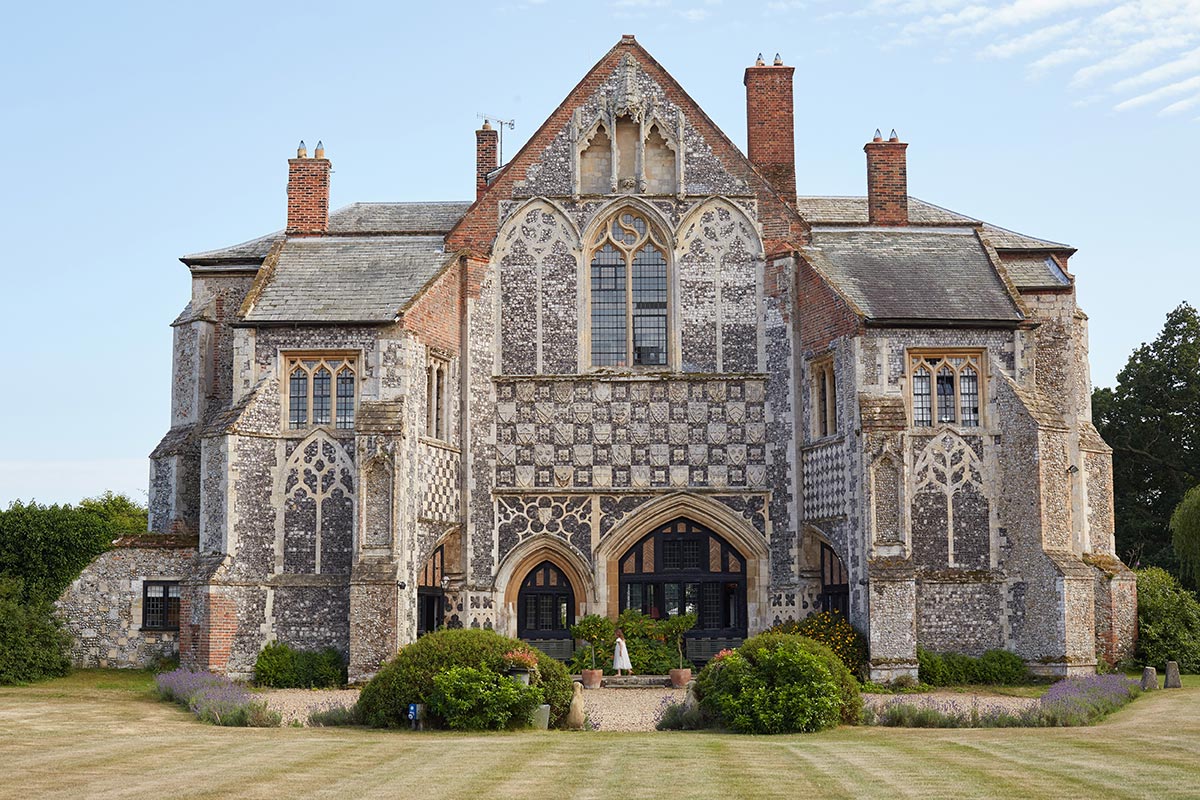St Osyth's Priory (or Abbey, as it soon became), Chich, Essex, is absolutely gorgeous. You can see it
here. The Austin priory was founded by Richard Belmeis, Bishop of London, c.1121, and its first prior was
William de Corbeil, who became Archbishop of Canterbury.
Osyth was the daughter of Anglo-Saxon aristocrats, who, with St. Erconwald, founded Chertsey Abbey (675). Being the daughter of A-S aristocrats, she wasn’t allowed to become the nun that she wanted to be, but was forced into marriage. When her husband, King Sighere of Essex, was out hunting, she nipped down to the local bishops and got them to nun her. Sighere, being a decent chap, gave her some land at Chich, and she founded a convent there.
Osyth died twice. The first time happened when she was a girl. Her aunt, St. Edith of Aylesbury, sent her to deliver a book to St. Modwenna of Northumbria at her convent. Bt the convent lay the other side of a stream (presumably a pretty big stream). It was swollen, and she drowned. No-one missed her - Aunt Edith thought she must with Modwenna; the book was a surprise gift, so Modwenna knew nothing about it or its bearer. When Osyth still hadn’t come back the next day, Edith went looking for her - picking up Modwenna on the way. They found her wet corpse by the stream, and prayed. Osyth got up.
Later, once she had set up her convent and enjoyed being abbess for a while, some nasty pirates raided the convent and chopped off her head. BUT… she picked up her head and walked to the convent door, before collapsing. (The story gets transferred to Quarrendon in Bucks, where she was born, so it’s all a bit confused.) Anyway, this makes her a ‘
cephalophore’ - that’s a new word on me (thanks, Wikipedia!), but it’s easy to dissect - ‘cephale’ is Greek for ‘head’, and ‘phore’ is carrier (from ‘pherein’, to carry).

There are two seals catalogued by de Gray Birch. The first is from 1285, and the second from the 15th century. Both have similar subject matter, viz. Osyth. (The 15th-century one has, in addition, an angel holding a shield of the 3 crowns of East Anglia.)
This seal is the 13th-century one. Under a fine canopy, with lovely slender columns, and the sword and key of Paul and Peter, is Osyth with her head. Glorious.
S' • ECCE • SCE : OSYTHE • DE : CHIC : AD • CAS •
Its counterseal is, in the field, left, a cross;
Christ nimbed, lifting up right hand in benediction.







